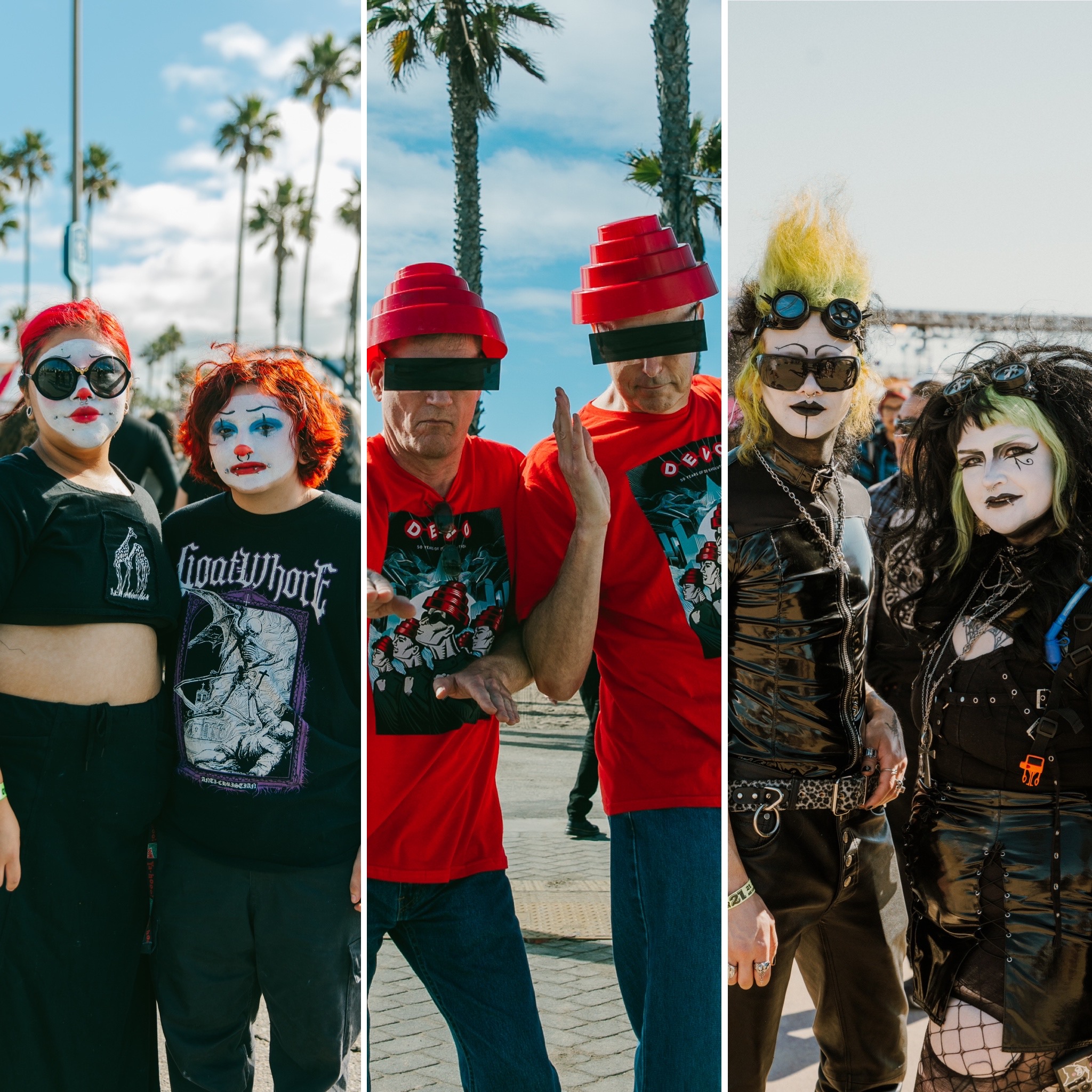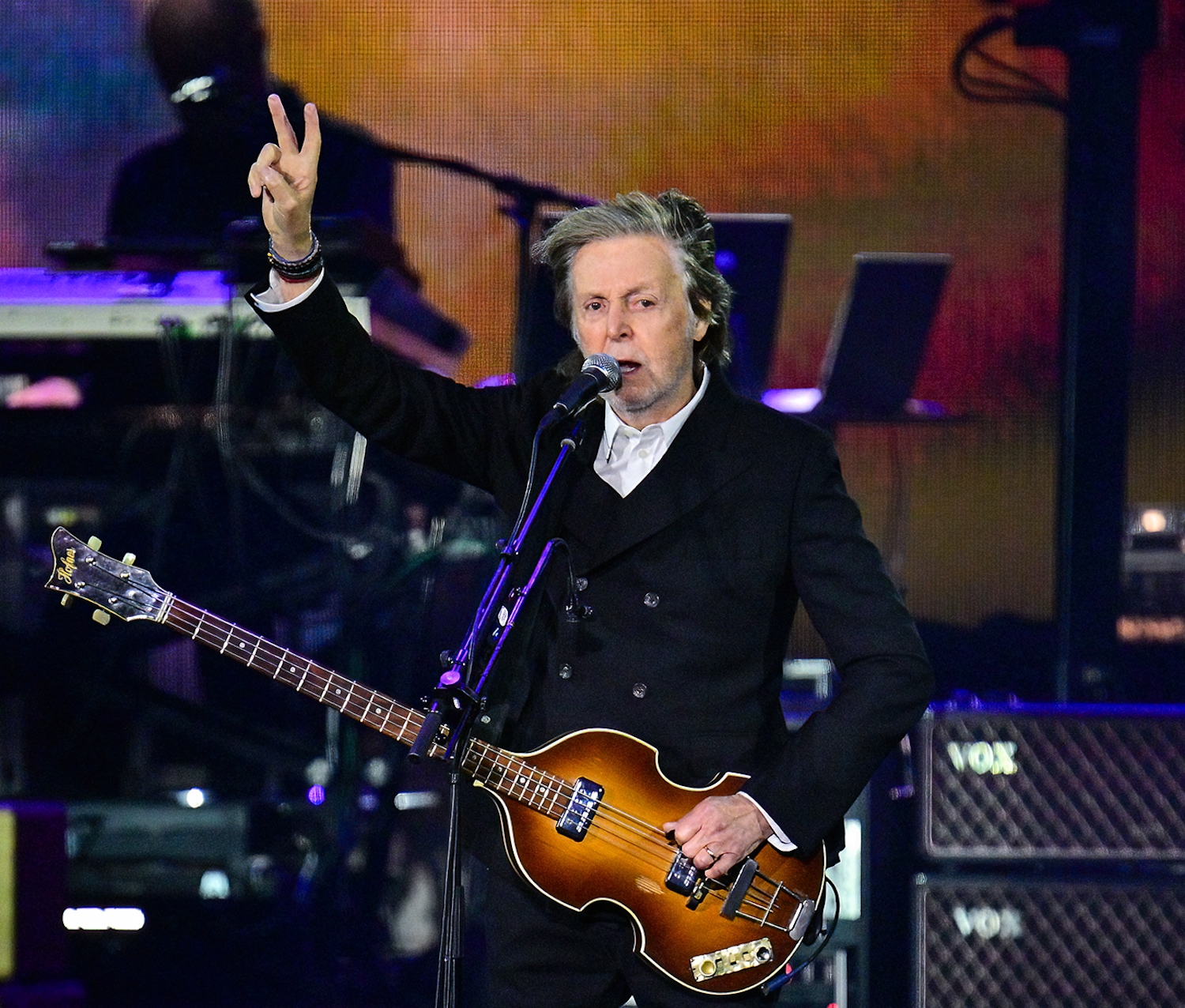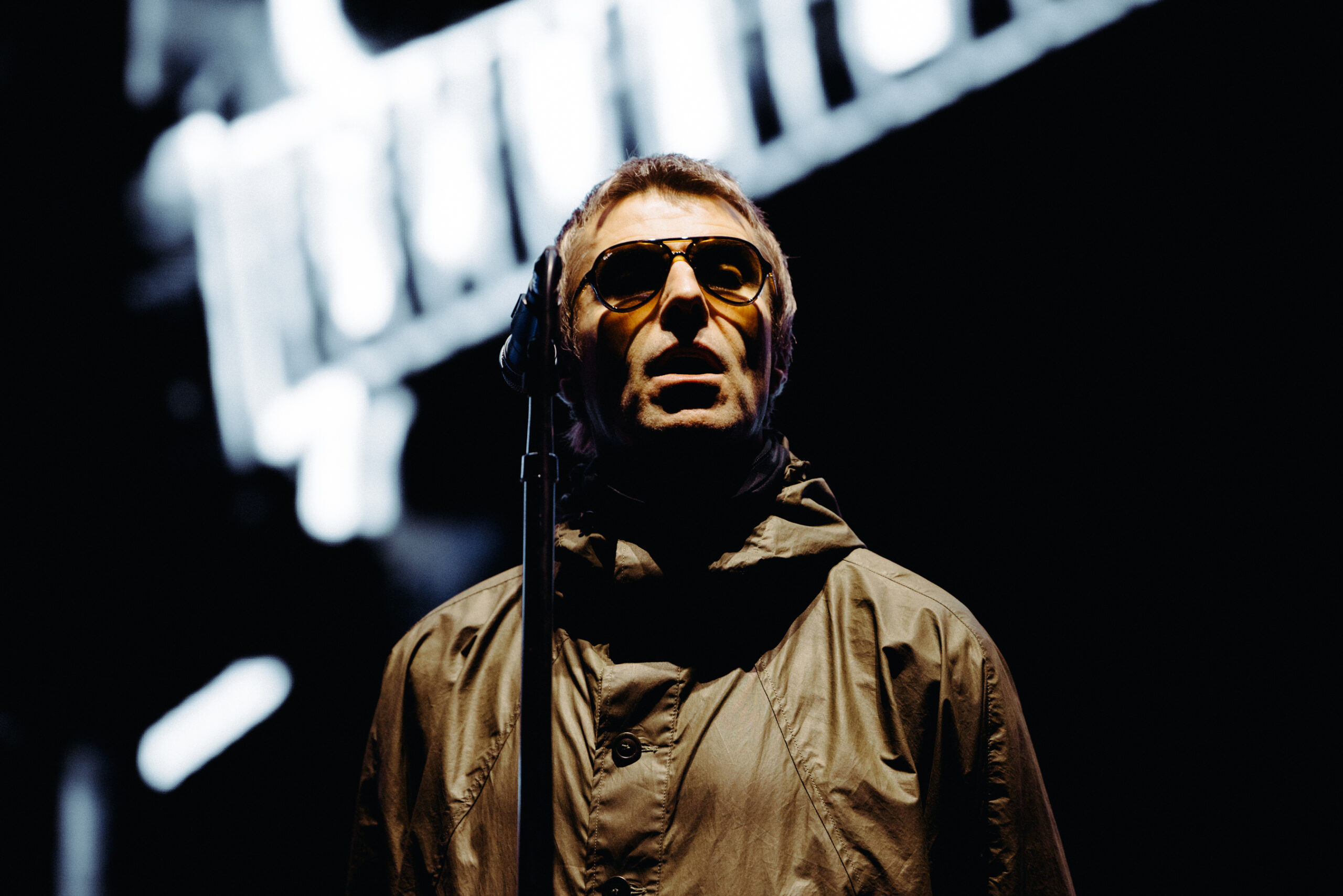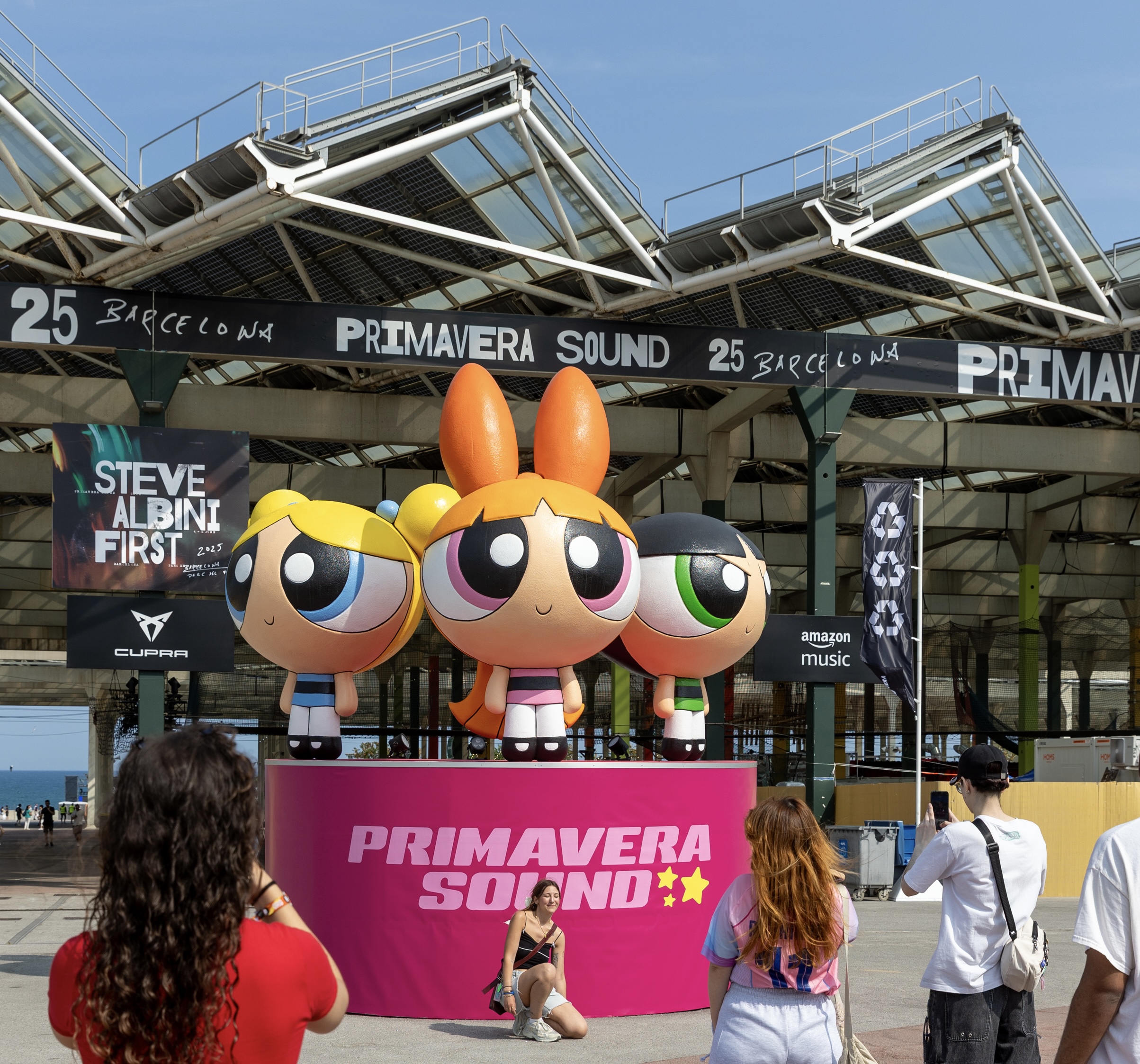Over the last several years, you may have noticed a proliferation of nostalgia-driven package festivals, the likes of When We Were Young and Just Like Heaven, which curate lineups derived from specific eras and genres. Back in June, Darker Waves was one of the new names to enter the fray. Similar to Cruel World, Darker Waves is a new wave and goth festival that takes place a little outside of LA. (Darker Waves’ inaugural lineup actually shared many names with Cruel World’s original outing last year.) You could be cynical about these things — another instance of corporate cash-ins on constant retro cycles, the theoretically expansive and exploratory nature of festivals narrowed for the era of algorithmic fandom silos. But if a specific festival of this ilk happens to tap into your favorite music — as Darker Waves does for mine — it can provide a unique chance to see a bunch of artists you may have never seen before, and may never see again.
While Cruel World may have beaten Darker Waves to the punch, Darker Waves outdid its predecessor. As these things go, the lineup had a smattering of contemporary artists influenced by the late ‘70s and early ‘80s, the occasional pseudo-related tangent like Kavinsky or Crosses, and then a whole lot of iconic names from new wave’s heyday: OMD, the Human League, the Psychedelic Furs, Soft Cell, Devo, Echo & The Bunnymen, the B-52s, and headliners New Order and Tears For Fears.
Given that an enviable lineup was crammed into a single-day festival, Darker Waves was crowded basically from the moment the gates opened in the morning. There was the occasional cute ‘80s-ism, like all the fonts across the festival grounds, or filters on the big stage screens reminiscent of old music videos, or a little tent full of vintage arcade games. You could see suburban grandparents and SoCal goths both old and young dance to a band like Urban Heat covering Q Lazzarus' “Goodbye Horses” in the late morning. There was something a little bemusing about the whole scene; I had never witnessed a beach festival with so many people wearing leather, so many people decked out in black head to toe, traipsing through sand in heavy boots. (Stereogum EIC Scott Lapatine remarked that it was akin to the annual Bats Day, when goths take over Disneyland.) In my travels, I met stoned septuagenarians who had flown down from Boise and recalled seeing various bands on the bill back in the early ‘80s; I met a French woman who had driven from Mississippi to see “Fears Of The Tears” because she was circuitously related to Roland Orzabal’s wife. This music goes over big in Southern California, but mixed in with the locals were clearly many who had made pilgrimages from afar. (Having flown from New York, I guess Scott and I were also in that category.)
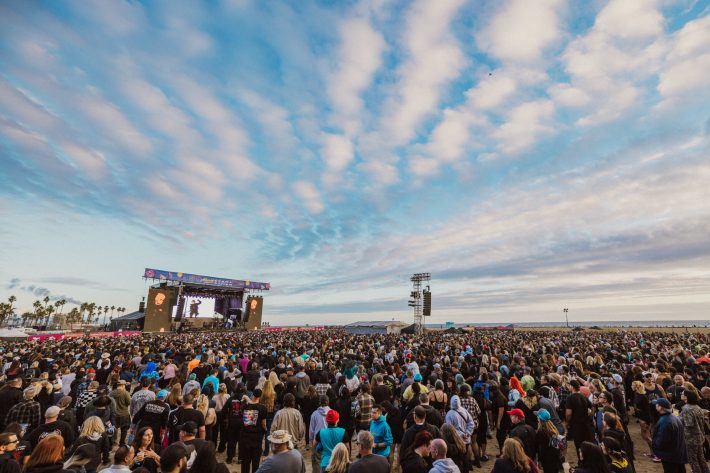
These crowds gathered early for the daytime acts like Drab Majesty — the first in a whole lineage of artists who were primarily night music performing under a bright sun. It quickly became evident that a one-day festival with a ten o’clock curfew and this busy of a lineup made for some frantic maneuvering, even in the early hours of the event. The main acts were predominantly on two stages spread out about a fifteen minute walk across the sand from each other — nothing sprawling compared to the giant festivals of the world, but Darker Waves had everything scheduled so that that there was little staggering between acts. Everything was in direct conflict, and the stages somehow managed to maintain a brutally efficient five minute changeover between most acts. Add to the fact that many bands had a mere 35 or 40 minute set time, and it was impossible to see everything, even if you were willing to split your time. All festivals have some rough conflicts, but almost the entirety of Darker Waves’ top billing were in direct opposition to each other: OMD vs. X, Devo vs. Cardigans (maybe an outlier on this lineup, but also playing their first US show in 17 years), Psychedelic Furs vs. Echo & The Bunnymen, the B-52s vs. the Human League.
All this meant that twelve hours passed rather fast and furious. After catching bits of Drab Majesty and the Chameleons, I ran over to the Waves Stage for the English Beat. With short sets, many artists kept everything lean, all-killer-no-filler, etc. The Beat’s set was a mere five songs, all hits, climaxing with “Tenderness” (by Dave Wakeling's other band General Public) and “Save It For Later.” A few minutes later, the stage barrier had pulled away to reveal OMD’s set-up and the finale of “Save It For Later” was immediately chased by “Electricity.” You could tell this just by looking at the lineup, but it soon become boldly underlined: This was a day where you could hear so many classic ‘80s songs, back to back to back. It was almost overwhelming.
Of course, at a festival like this you’re going to have to deal with the asshats who just want the party day because of those exact 15 or 20 songs they know across all the acts. Without fail, every set had that guy nearby yelling “Whip It!” or “Blue Monday!” or “Head Over Heels!” in between every song, as if the respective artist wasn’t going to play those songs at the ‘80s nostalgia package festival. Mostly, though, you could tune that out, and instead find a crowd overjoyed to see these artists in the flesh.
Case in point: Under a blistering early afternoon sun, OMD got people going not just with a mid-set “If You Leave,” but just as much with “Dreaming” and “Secret” and even the late-era “History Of Modern (Part 1).” Andy McCluskey was the first to acknowledge it: “The set’s so short we’re going to be totally relentless.” He teased the audience, calling them “daft bastards” for jumping up and down to a song about the end of the universe, but he also gamely played into the proceedings, asking if they’d like to hear another John Hughes song. Even the more stereotypically artsy or bristly artists of the bunch would concede similar coy introductions of their most famous material. “Here’s one you might remember,” Gerald Casale drolly promised before “Whip It” during Devo’s set. Marc Almond gleefully unveiled the “post-punk classic!” “Sex Dwarf” at the end of Soft Cell’s set. Even Bernard Sumner gave a mumbly grandpa intro for “a very popular old song” known as “Age Of Consent.”

After OMD’s set concluded with “Enola Gay,” the pattern for the rest of the day began to unfold — crowds streaming in each direction to reposition for artists beginning right at the moment the last thing they were watching ended. The act that really blew me away in the afternoon was Devo. I’d seen them once before, and knew they had held up far better than some of their contemporaries. (Some artists can bark out these 45-year-old songs with the same urgency as their youth … some cannot.) But at Darker Waves, they smoked most of the competition. Boasting an overwhelming energy for a bunch of guys in their seventies, Devo ran onstage and blitzed through a truncated version of their normal performance — selections from across their albums, a video interlude, a return to stage in the classic yellow jumpsuits, roaring their way through a handful of tracks from their debut. Even with their well-worn bits — “As the sun sets in the west and on the West, I have a question: How many of you here tonight believe de-evolution is real?” and such — the whole thing seemed somehow more visceral and weird and noisy than it must have even when they were the Akron oddballs way back in the late ‘70s. “Uncontrollable Urge” and “Mongoloid” and “Gates Of Steel” felt like perfectly controlled chaos, performances that could have gone off the rails but instead steamrolled over the crowd. During Devo, Scott went to the Cardigans and said they were incredible.
Things got a little messy later on. I’d made the decision to see Psychedelic Furs’ brief set rather than Echo & The Bunnymen, and when the time arrived, the viciously prompt Darker Waves had no Psychedelic Furs to be found. Another five-minute increment passed, and then another, and then finally they were there, launching right into “Heaven.” You wouldn’t have gathered the band had been in any kind of rush or that they had almost not made it or anything. Richard Butler looked debonair as ever, traipsing around the stage in sunglasses and a long jacket, smoke-rasping his way through “Mr. Jones” and “The Ghost In You.” Because they had started late, I had to take off during “Pretty In Pink” in order to catch the beginning of the Human League — one of the big ‘80s names I had never seen before. As you passed through the middle of the festival grounds, you could have the strange sensation of hearing “Love My Way” and “The Killing Moon” at war with each other from different ends of the beach. (Echo had also started very late, and also performed a shortened set only featuring major hits.)
Some acts on Darker Waves’ bill have released surprisingly solid new music, some have maintained a more “relevant” touring circuit, and some have earned a kind of elder statesmen stature thanks to being perennially influential. Human League sit somewhat outside of all of that, and I didn’t know what to expect from their set. Crammed onto the festival’s one tiny "Tiki" stage (the one otherwise primarily reserved for the smaller acts on the bill), the band drew an impressive crowd considering they were opposite B-52s, who wrapped up a "farewell tour" earlier this year. And it was a fervent crowd. Naturally, the set was dominated by material from Dare, but even other tracks stoked big singalongs. The Human League themselves sounded great — Philip Oakey’s voice has barely aged, the synths and beats were all dialed right in. They suffered from a quieter stage that didn’t allow them to sound quite as muscular as some other sets, but were powerful nonetheless.
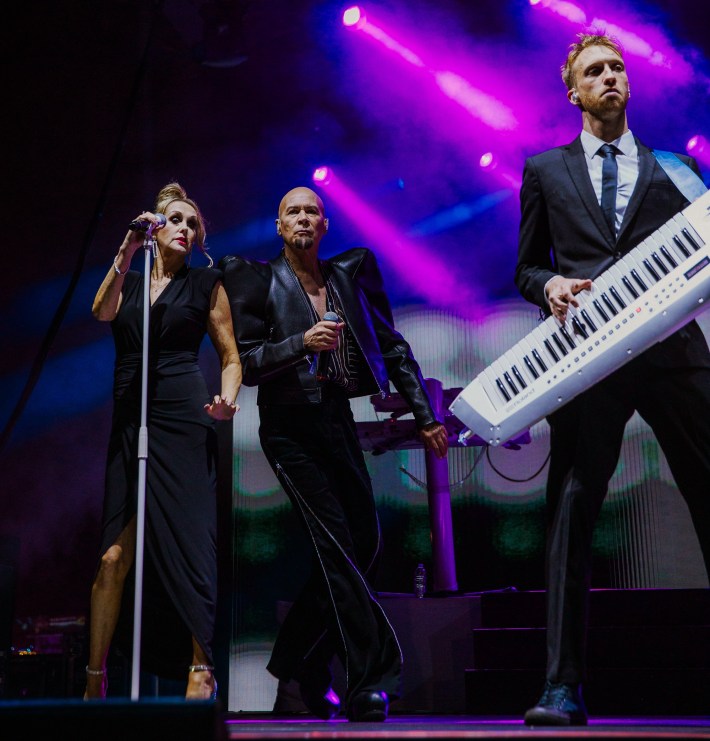
Afterward, the big events of the night were upon us. After a day of hectic back and forth across the festival grounds, Darker Waves concluded with two proper headliner-length sets from New Order and Tears For Fears, both of them unencumbered by conflicts. It was a moment for everyone at the festival to gather together for some of the biggest acts and hits Darker Waves had to offer.
New Order is one of my favorite bands; nevertheless, I had some amount of ambivalence about seeing them live. My past experiences were slightly underwhelming; the most recent, when I saw their dual headliner tour with Pet Shop Boys last year, was almost embarrassing. (Pet Shop Boys blew them out of the water.) That wasn’t the case at Darker Waves. Bernard Sumner was never a virtuosic vocalist, but he felt more on-point and present, and the band sounded gigantic. There was so much more verve and electricity in what they were doing last night, whether in how massive “Bizarre Love Triangle” felt or the little funk affectations they’ve layered into “True Faith.” And the mood on the beach was, accordingly, completely jubilant. The band opened with “Regret” into “Age Of Consent” into “Ceremony” into “Your Silent Face” — a take-no-prisoners run they’ve leaned on in recent years, but one that ceded no ground during a lean festival set. “Sub-Culture” into “Bizarre Love Triangle,” the comparatively recent “Plastic” throbbing like an old classic, a transcendent “Temptation” bringing everything to a head before the requisite “Love Will Tear Us Apart.” There were moments at Darker Waves where you could do a little time traveling. And then there were sets, like Devo’s and New Order’s that connected 1983 to 2023, that still felt impactful and alive in a whole other way.
Originally, I thought it made sense to have Tears For Fears closing after New Order. Since reuniting, the duo has steadily climbed back to arena-headliner status via rigorous touring. And sure enough, their set was majestic and pristine. Roland Orzabal and Curt Smith alike show their years in a fine wine kind of way, and both can still truly perform. They are one of the rare acts at these kinds of festivals who can line roughly a third of their set with material from their new album and it doesn’t seem totally egregious or delusional. (“The Tipping Point” in particular sat strongly alongside the old classics.)

For the big finale, it was a little quieter than the euphoria of New Order’s set. There were plenty patient, slow songs, and somewhat ill-advised decisions — I was thrilled to see “Suffer The Children” on the setlist, and less so by the slowed-down, piano-based arrangement with which they’ve neutered it. (English singer-songwriter Carina Round took the spotlight to sing that one.) But by the end those quibbles fell away. Tears For Fears know what they’re doing. After a few hits early on, they frontloaded the new material, and then the end of the show is the same kind of relentless onslaught that Andy McCluskey had promised way back during OMD’s afternoon set. It was one beloved Tears For Fears track after another: “Mad World,” “Memories Fade,” (which Orzabal had jokingly referred to as a Kanye West cover), “Pale Shelter,” “Break It Down Again” (the only song they perform from the band's '90s albums without Smith). And finally, at the end, “Head Over Heels” and “Shout” as the final word on Darker Waves’ first year.
As you exited, you could tell most of the audience was vibrating, having seen old favorites onstage again. I considered how odd this whole premise was: Darker Waves’ first year seemed a total success, but how often could they repeat it without returning to the same wells? There are only so many names from that era that remain intact, that remain prominent enough to justify festival ticket prices. How long could this particular strain of nostalgia be mined over and over? But eventually I was with all the revelers who didn’t care about any of that. I walked along the beach with “Shout” echoing in my head, having gone through a whole long day of seeing some of the most formative music of my life, alongside a bunch of unknown kindred spirits who love it just as much as I do.
